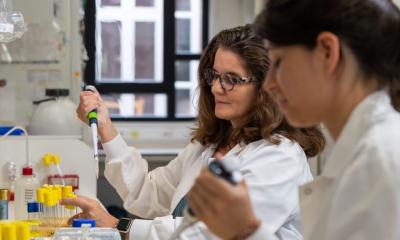New antibiotic shows promise in treating drug-resistant bacteria
Scientists have discovered a new antibiotic, teixobactin, that can kill serious infections in mice without encountering any detectable resistance, offering a potential new way to get ahead of dangerous evolving superbugs.
Researchers said the antibiotic, which has yet to be trialled in humans, could one day be used to treat drug-resistant infections caused by the superbug MSRA, as well as tuberculosis, which normally requires a combination of drugs that can have adverse side effects.
"The discovery of this novel compound challenges long-held scientific beliefs and holds great promise for treating an array of menacing infections," said Kim Lewis, a professor at Northeastern University in the United States and co-founder of the NovoBiotic Pharmaceuticals, which has patented teixobactin. Lewis worked with researchers at Germany's University of Bonn and with Britain's Selcia Limited, and the finding was published in the journal Nature on Wednesday.
His co-researcher, Bonn's Tanya Schneider, explained in a teleconference that teixobactin belongs to a new class of compounds and kills bacteria by causing their cell walls to break down. It seems to work by binding to multiple targets, she said, which may slow down the development of resistance.
The problem of infections developing drug resistance -- a feature of medicine since Alexander Fleming's discovery of the first antibiotic, penicillin, in 1928 -- has worsened in recent years as multi-drug-resistant bugs have developed and drug companies have cut investment.
The World Health Organization warned last year that a post-antibiotic era, where even basic healthcare becomes dangerous due to risk of infection during routine operations, could come this century unless something drastic is done.
Lewis and his NovoBiotic colleagues sought to address the problem by tapping into new potential sources of antibiotics. They developed a way of growing uncultured bacteria in their natural environment using a miniature device called an iChip that can isolate and help grow single cells.
NovoBiotic has since collected about 50,000 strains of uncultured bacteria and discovered 25 new antibiotics, of which teixobactin is the latest and most interesting, Lewis said. Scientists not involved in the work welcomed the finding, but cautioned that human trials of teixobactin would be key.
"The discovery of a potential new class of antibiotics is good news," said Richard Seabrook of Britain's Wellcome Trust medical charity. "Screening previously unculturable soil bacteria is a new twist in the search ... and it is encouraging to see this approach yielding results. However, we will not know whether teixobactin will be effective in humans until this research is taken ... to clinical trials."
14.01.2015










